Acropora desalwii falls into the category of Acropora species that can easily be recognized. It possesses some very characteristic features that make it stand out, easily identified from the other species. Branchlets with multiple axial corallites on the top of the colony give this coral its typically spiny appearance.
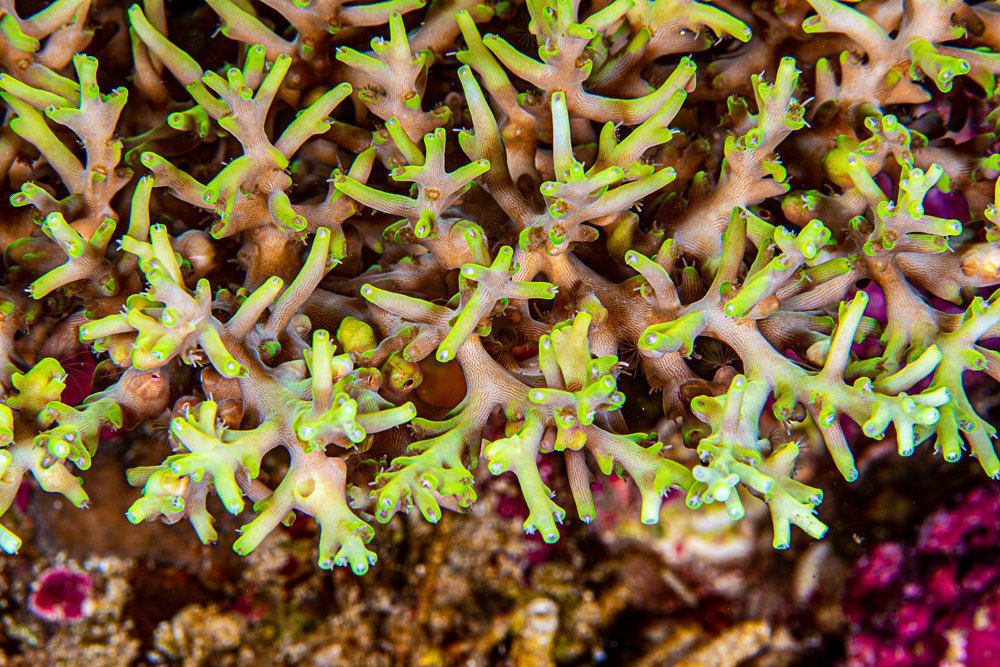
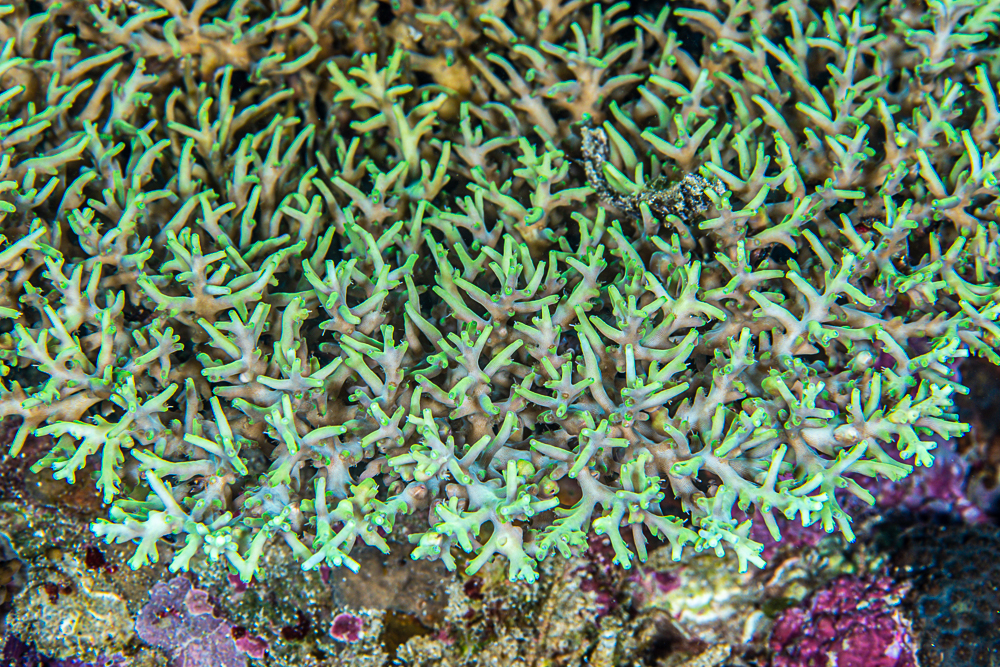
The species status is not completely accepted, and some issues may arise depending on the origin of the specimens. Nevertheless, it’s a very characteristic, common species in some parts of Indonesia. And for once, the two highest Acropora specialists (Veron and Wallace) agree on something, so I don’t see a reason to not use the species name. The species was described by Dr. Carden Wallace, who named it in honor of Des Alwi, an Indonesian folk hero from the Banda Islands. Hence, some call it Des Alwi’s Bushy Staghorn Acropora.
Colony shape:
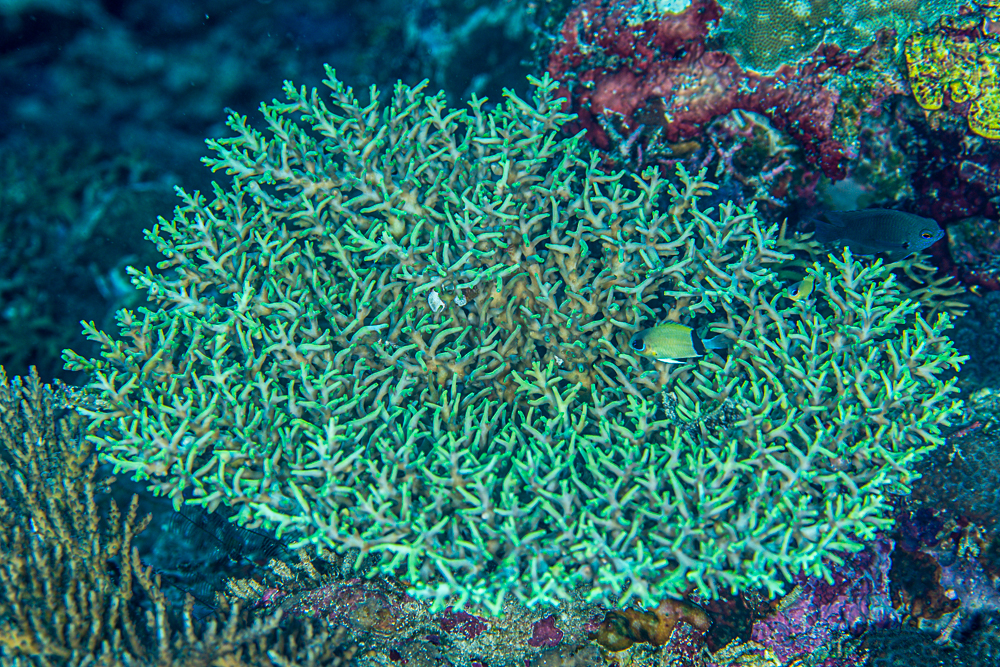
Colonies are small, corymbose plates, rarely exceeding 50 cm (1.65 ft), and are often side attached. They are generally a couple of inches thick (5 cm). The top center of the colony is very crowded, displaying numerous branchlets, each with multiple axial corallites, all at the top of the colony, giving this very spiny appearance. Toward the edges of the colony, branchlets become horizontal and are less crowded. No tertiary branchlets are present.
Corallites:
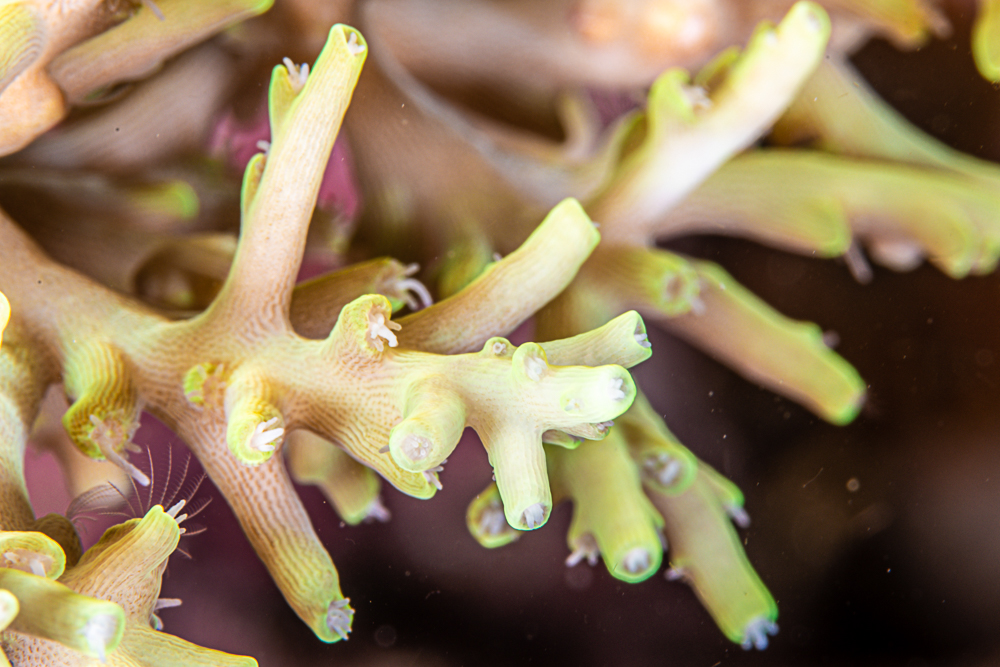
One characteristic of this species is that it is dominated by axial corallites. Very few radial corallites are present. They don’t touch. Axial corallites are long, tubular, and upright, becoming horizontal towards the plate margins where they are similar to radial corallites.
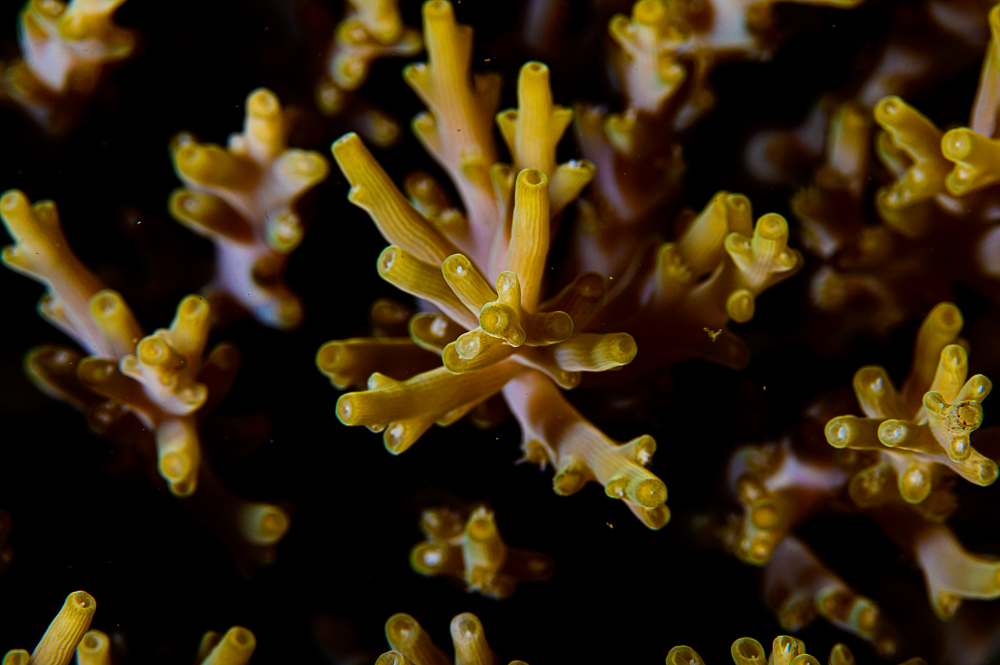
Radial corallites are one size or graded, appressed, and tubular with an oval-rounded opening.
Habitat:
Acropora desalwii favors turbid, vertical walls or steep slopes and protected habitats, usually between 6 and 30 m deep (18 to 90 ft).
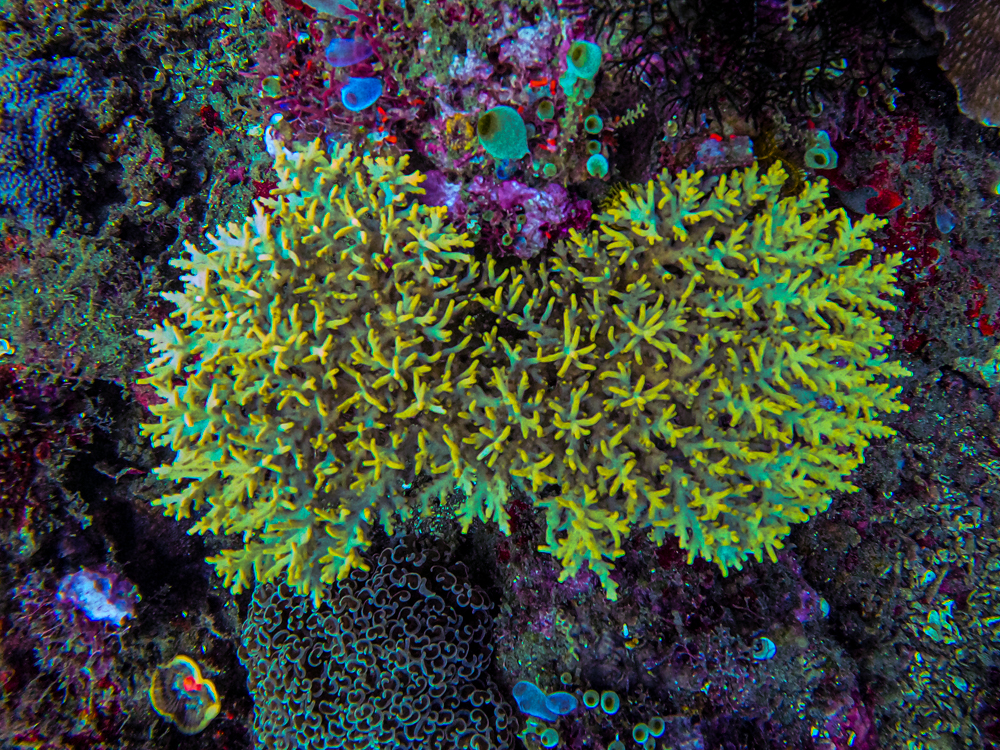
Coloration:
Most Acropora desalwii we encounter are brown. But, especially in North Sulawesi, we sometimes encounter a very attractive yellow/green fluorescent color morph.
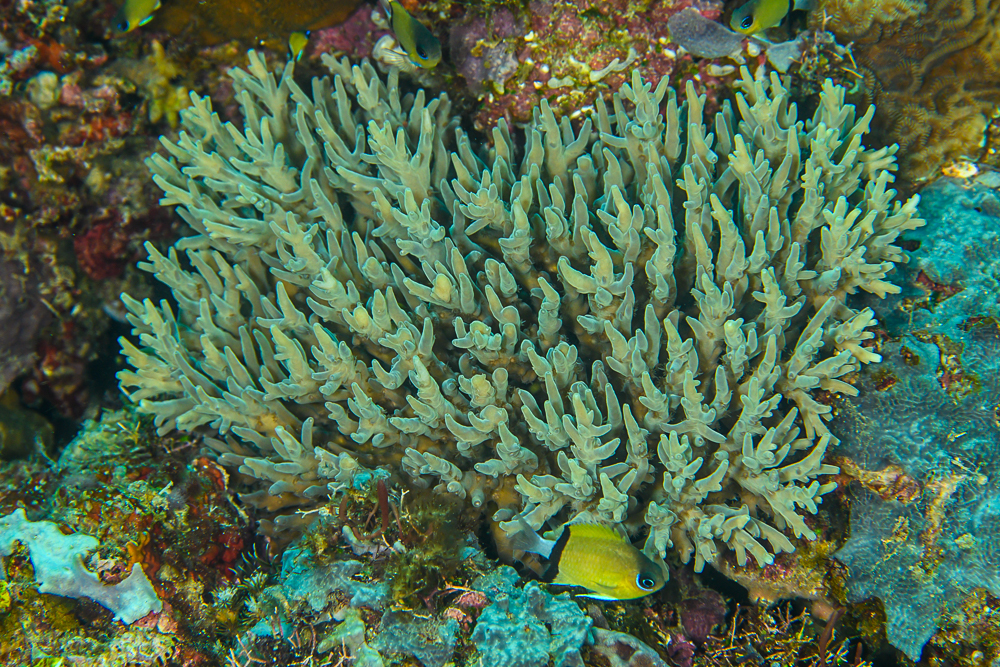
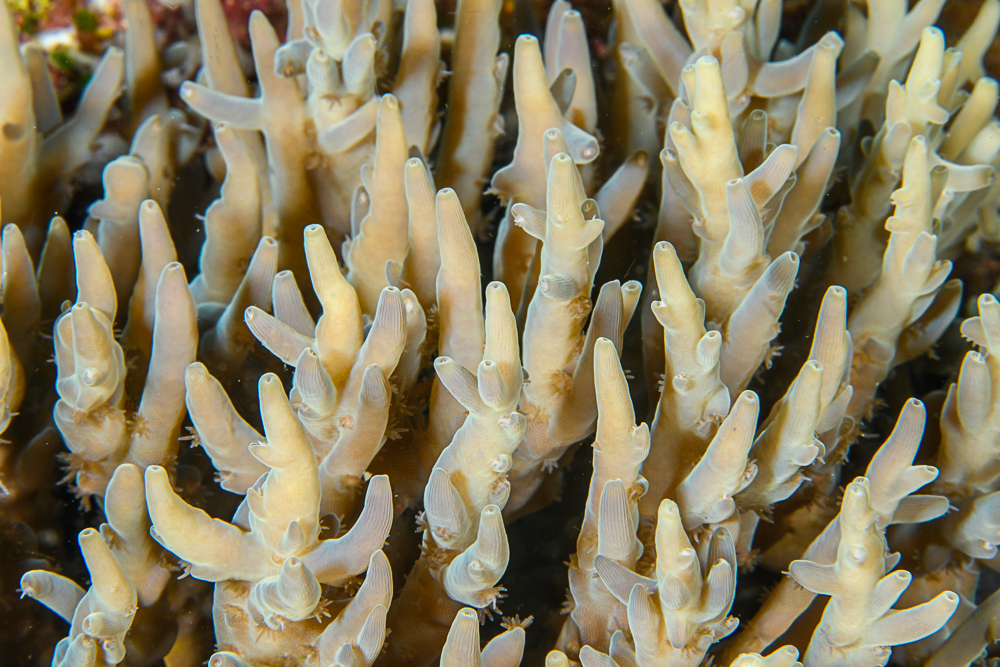
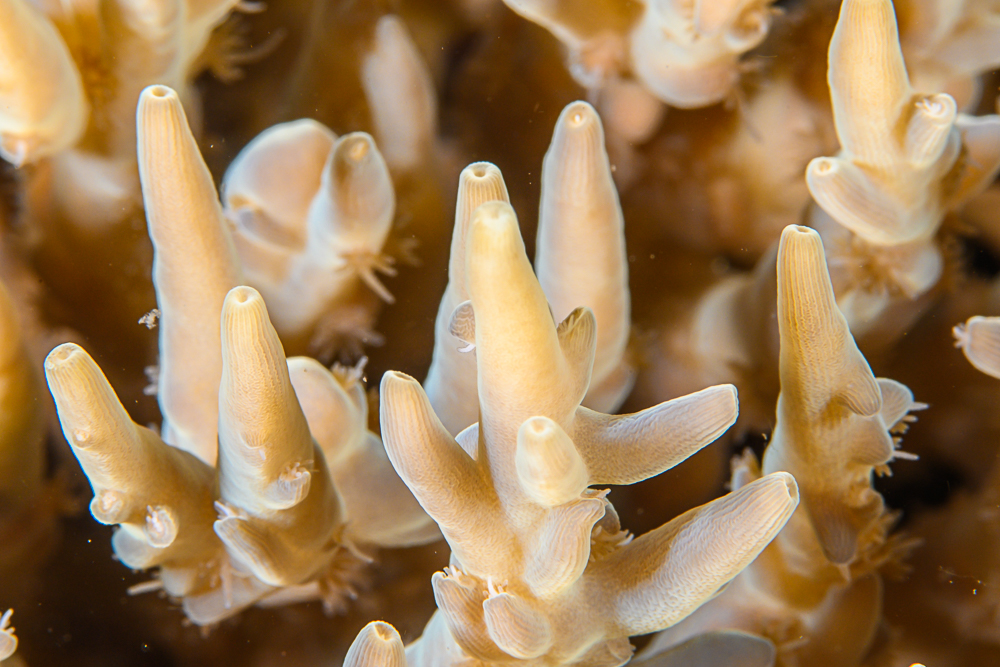
In the aquarium, some of the lighter brown or cream-color specimens may appear light blue, especially under blue light.
Maintenance:
Like many deepwater Acros, the maintenance of Acropora desalwii is less complicated than the care of fast-growing shallow-water Acroporas. This species can be mixed with LPS, or should be placed in the lower portion of the tank in an SPS-dominated reef.
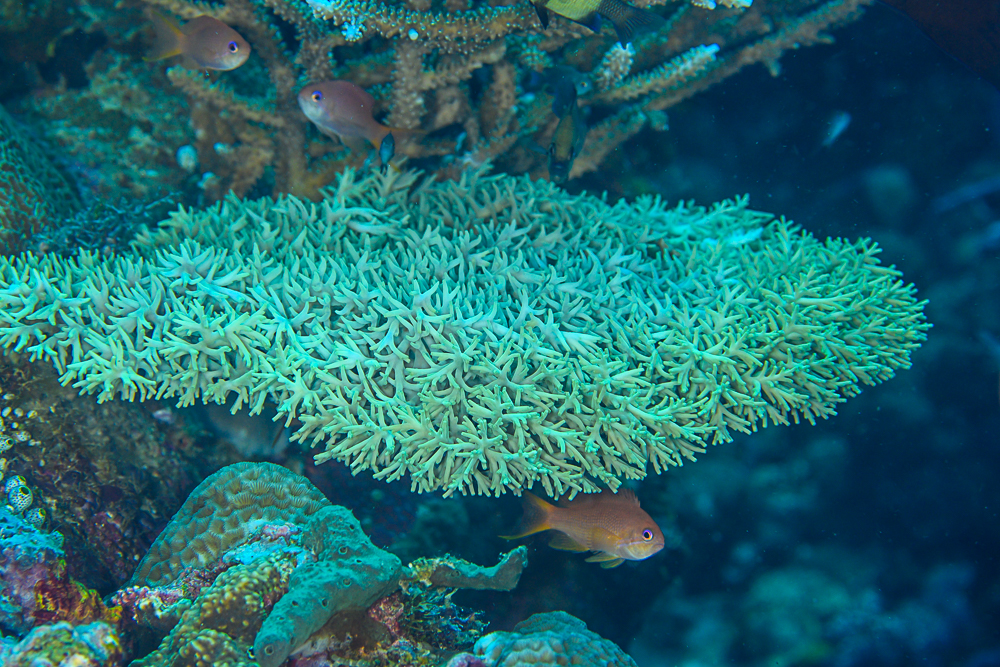
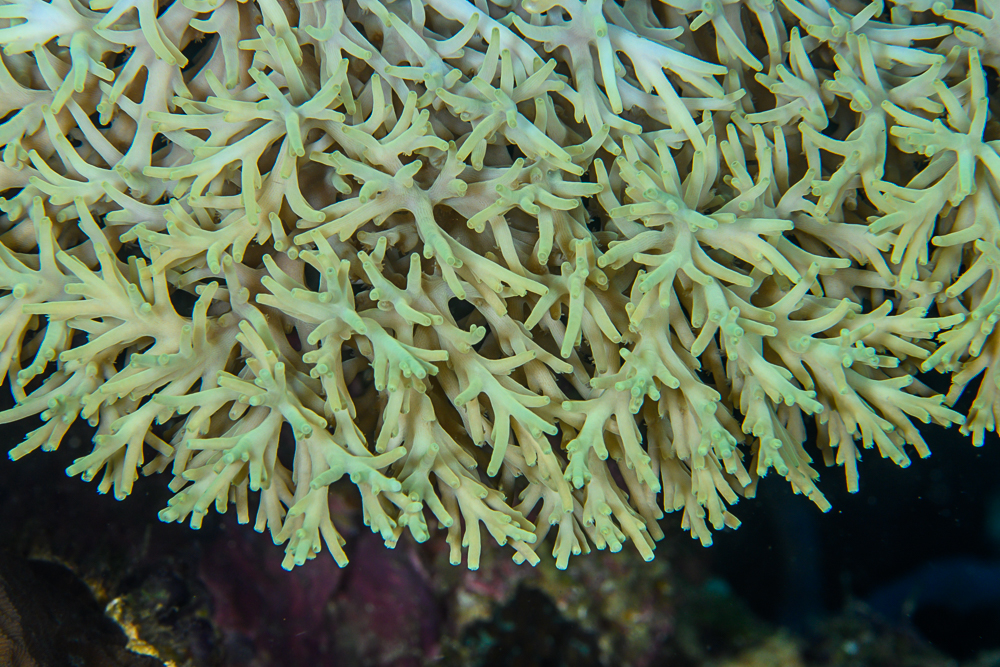
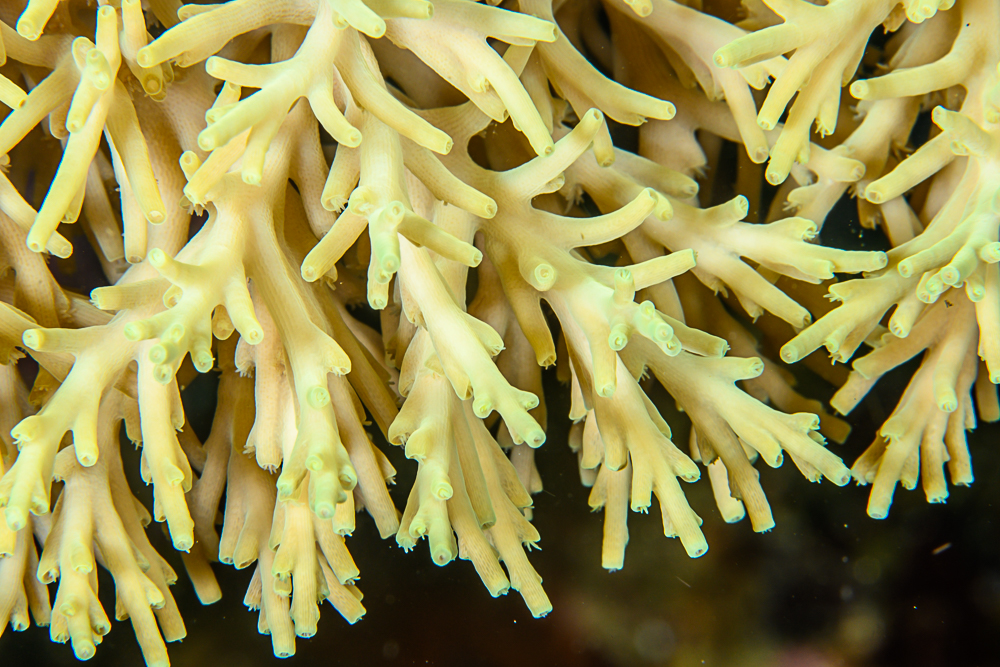
A PAR level of 150-250 is sufficient for Acropora desalwii. This species doesn’t fare well in water that is “too clean”, and as such the reef aquarium chemistry should be maintained with a base, low-level amount of organic nutrients to ensure the coral’s health. The growth of this species is quite slow, and it doesn’t compete well with fast-growing SPS or aggressive LPS; they should be given ample safe space.




